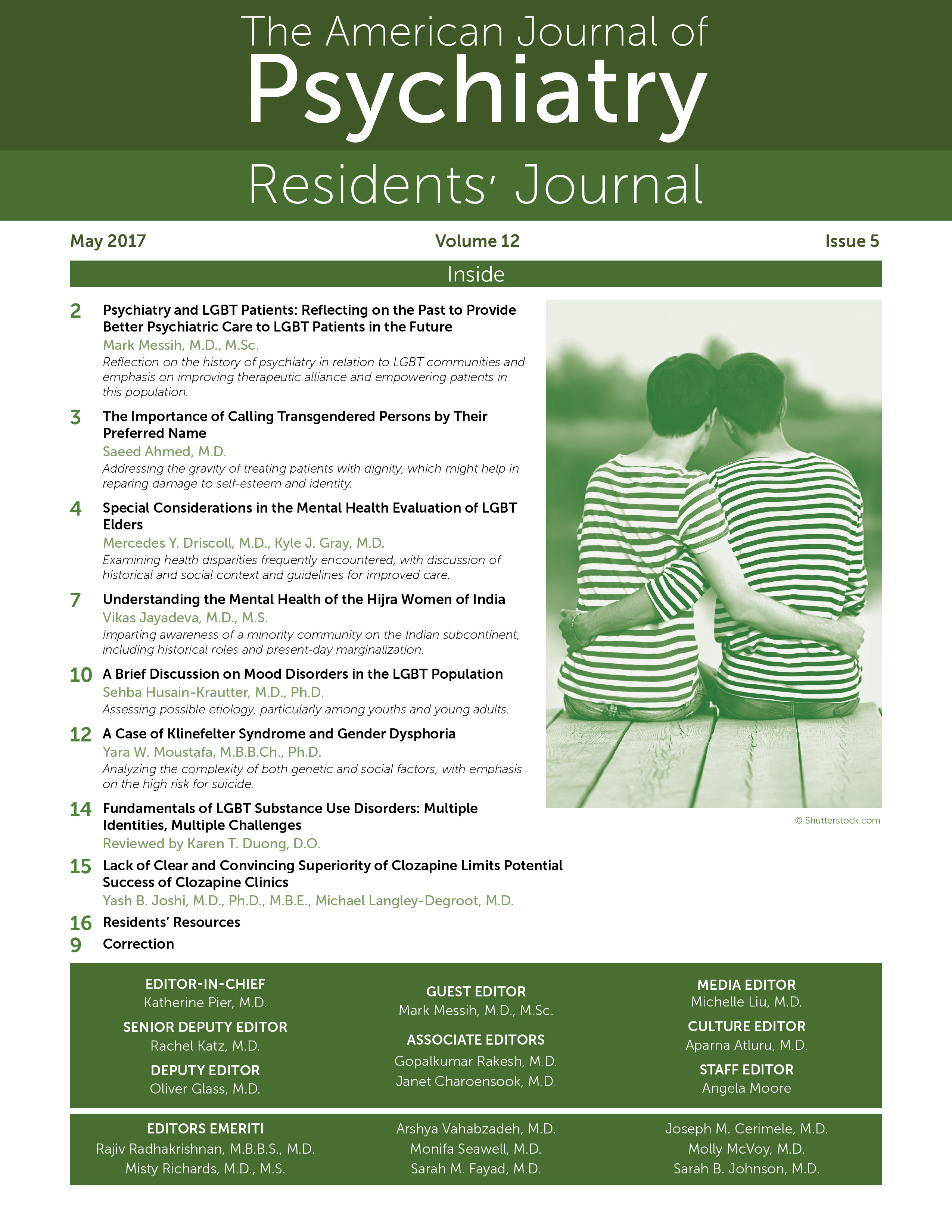On a recent Thursday in the psychiatry ER, I had a striking encounter with a patient in her early 20s, a transgender female who had been brought in by police due to suicidal ideations. A patient with no psychiatric history, transgender or not, suddenly presenting this way in the ER always triggers concern. But, in this case, with these symptoms exhibited by a transgender person, past experience dictated extra care because there can be some risk factors that might trigger suicidality in such a patient, especially if the patient had never been in a psychiatric emergency department before.
The patient was celebrating her 28th birthday, but she reported that the celebration had been cut short upon receiving a birthday card from her parents that addressed her by “his” original male birth name. To her, this represented a total invalidation of her core identity and complete rejection by her parents. She also said that compounding the problem was the fact that it had only been a year since she had outwardly identified and embraced her new gender and female name, debuting it across her social life, though never “officially” in legal contexts or identifying documents.
Her case reminded me that as a mental health care provider, it would be imperative to take special care in identifying and addressing the patient. Literature shows that transgender populations encounter more intimate identity issues, which may stem from moral and societal discrimination and be compounded by psychological trauma (
1,
2).
Transgender youths are at an increased risk for adverse psychosocial consequences. This population sits at an approximately threefold higher risk for depression, anxiety, self-harm, and suicidal ideation (
3). According to a report by the National Transgender Discrimination Survey, nearly 41% of transgender youths report at least one suicide attempt in their lives, compared with 1.6% in the general population (
2,
4).
These numbers compel a deeper search and wider survey into this community’s specific vulnerabilities. The high prevalence of suicide attempts and self-injury makes it vital to remain vigilant to the key risk factors increasing these tendencies in transgender persons. These risk factors include harassment, physical and sexual abuse, and being a victim of violence and/or discrimination (
2). Risk factors also include internalized shame and complications caused by identity perceptions and preferences, as well as incongruent identity documents.
Among these vulnerabilities, as in the present case, parental rejection stands most prominently and occurs in up to 57% of cases (
2). The odds that those who experience family rejection will attempt suicide are 3.5 times higher than those who do not experience familial rejection. Among those rejected by their families, the odds of drug or alcohol abuse are 2.5 times as high (
5).
Addressing transgendered persons by their preferred names is a simple but important act of respect that might begin to repair damage to their self-esteem and identity. Parents and family members should not only accept their child’s, or other family members’, new gender identity but also recognize them by their preferred name.
Acknowledgments
The author thanks Dr. Vijal Parikh (PGY-4) Chief for Research at Nassau University Medical Center for guidance.
